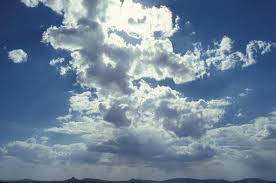
The moisture in the air is the result of the evaporation of water by the heat of the Sun. The amount of evaporation depends on the quantity of water and the intensity of the Sun’s heat. Another fact that contributes to the increase of atmospheric moisture is the breathing of living creatures. All these factors combine to produce enormous quantities of water vapour which are continuously rising from the surface of the land and the sea and condensing in the atmosphere. When this happens the vapour turns into clouds of various types.
It was not until 1803 that clouds began to be classified scientifically. Luke Howard published a paper on clouds and the Latin terms which he used became the basis of the internationally accepted cloud classification. Further work was carried out towards the end of the century and the development of aviation stimulated further research. Clouds have been classified into three main groups by international agreement. The classification depends on the height of the clouds above sea-level. The groups are: cirrus, cirrocumulus, cirrostratus, between 2,000 and 7,000metres; stratocumulus, stratus, below 2,000 metres. There are clouds that build up like pillars from the land into sky to a height of over 6,000 metres. These include cumulus and comulonimbus.
When the condensation of water vapour in the atmosphere goes beyond a certain limit, it turns rain or snow.
Picture Credit : Google

